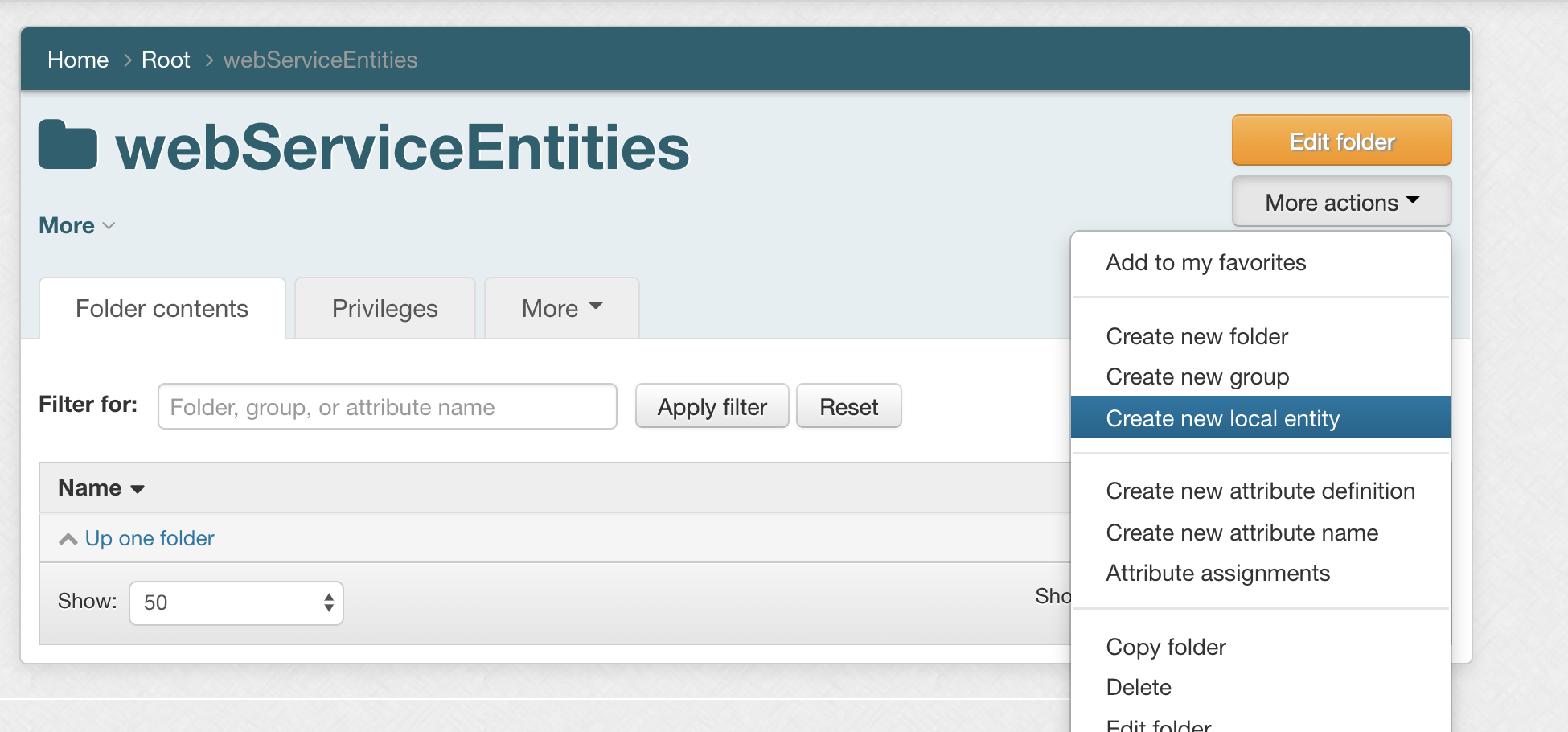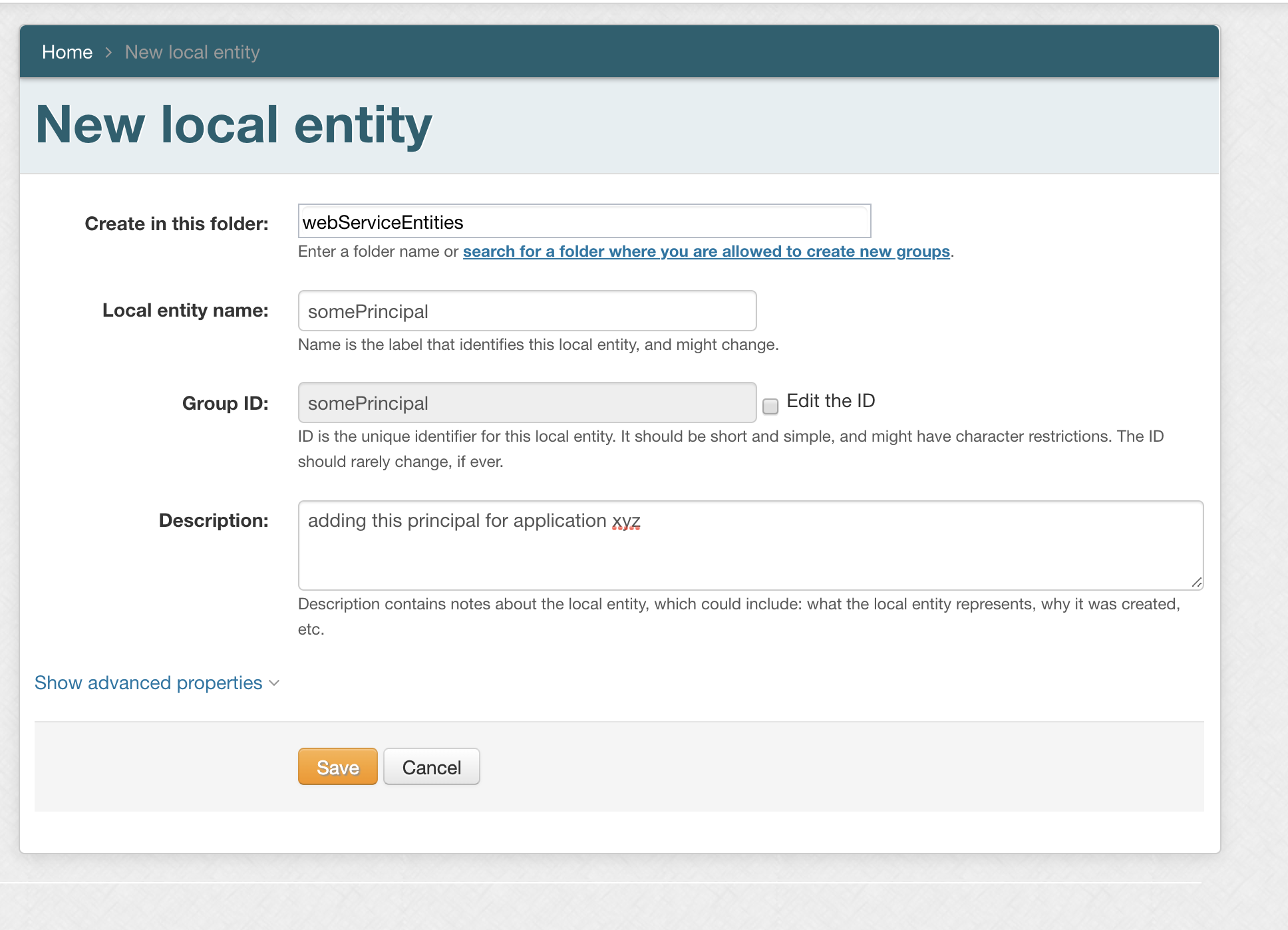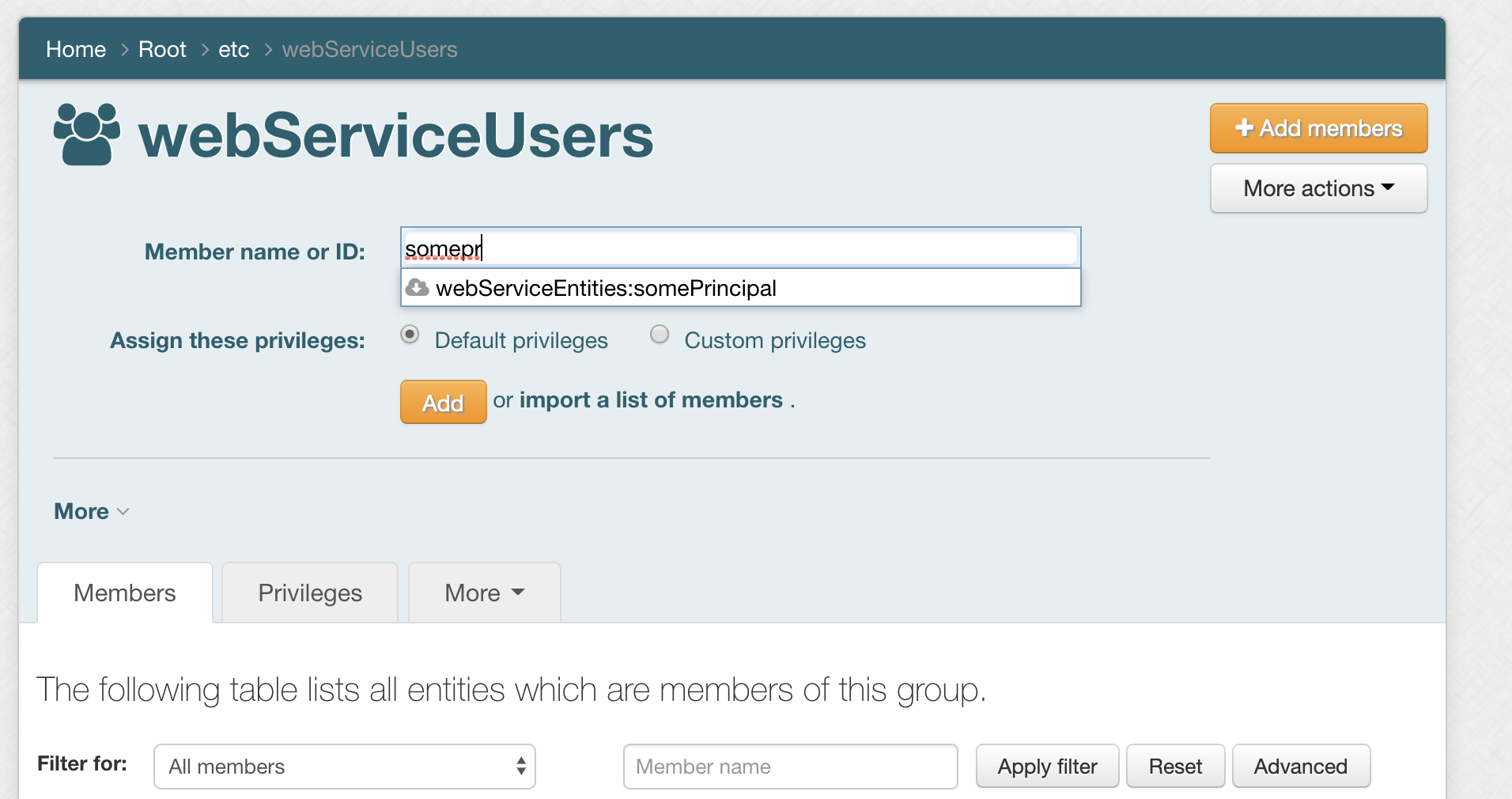...
You can link up an account with a local entity. Here is an example from the demo server
Add a user via apache like the previous link: password store ( or any other Authentication method ) . In this example we will create an account named "test_local_entity" in the authentication source.
| Code Block |
|---|
[mchyzer@i2midev1 ~]$ sudo htpasswd /etc/httpd/conf.d/users.pass test_local_entity New password: Re-type new password: Adding password for user test_local_entity |
Create the local entity in Grouper.
You also need to expose this account to grouper via a Subject API.
Fortunately Grouper has a built in Subject API to expose local entities created in Grouper. You can use that feature if you don't have another Subject API that would return the account name via a Subject Identifier lookup.
Here are a few screen shots of creating a local entity in a "special folder" (path to the folder is used in the configuration later) created to hold local entities for use as Grouper Web Service accounts.
Note the 'Local entity name': needs to match the name of the account.
Add it to the WS group.
Note: It is best practice to never add a Subject directly to a policy group. ( The webServiceUsers group is a policy group. )
- The reference group can be the Subject that is privileged to other objects Grouper.
- This allows for two or more web service accounts who need to be granted the same access a trivial change. ( Add them to the same set of reference group(s) )
configure Configure a prefix on logins on WS: in grouper-ws.properties to only select local entities from the folder where you store local entities for use with Grouper Web Services.
NOTE: Don't forget to KEEP the trailing ":" seperator. This string is used as a prefix string that is concatenated to any "username" that is returned from any authentication source.
| Code Block |
|---|
# prepend to the userid this value (e.g. if using local entities, might be: etc:servicePrincipals: ) ws.security.prependToUserIdForSubjectLookup = etc:servicePrincipals: |
...


